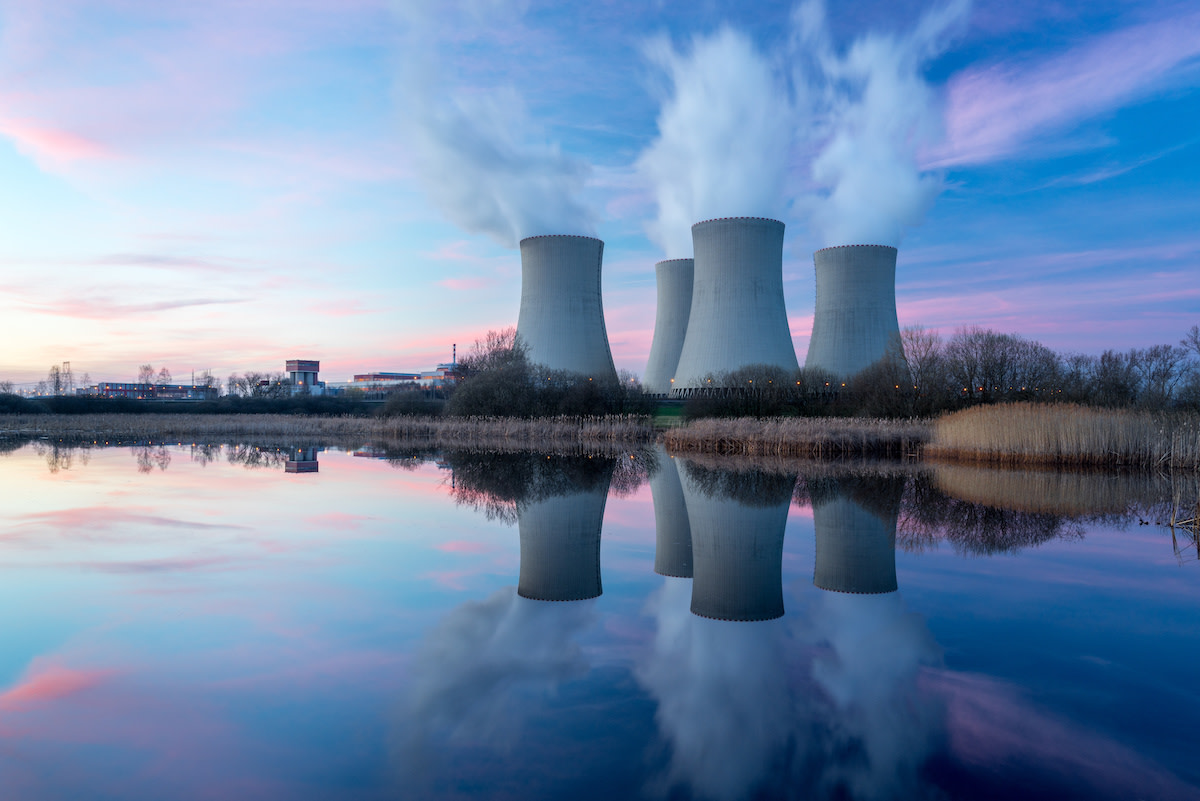Nuclear Power Explained: How Does Nuclear Power Work?
Written by MasterClass
Last updated: Jul 15, 2021 • 3 min read
Generating nuclear power involves capturing nuclear energy from nuclear reactors to produce electricity. Learn about the process of creating nuclear energy.
Learn From the Best
What Is Nuclear Power?
Nuclear power is the process of capturing nuclear energy from nuclear reactors to produce electricity. A facility that creates electricity from nuclear energy is called a nuclear power plant. Today, you can find nuclear power plants throughout the world, though they are particularly popular in France, Japan, and the United States. Finland, Hungary, Russia, and the United Kingdom are also nuclear power users.
A Brief History of Nuclear Power
Italian physicist Enrico Fermi and his team produced the world’s first nuclear chain reaction at the University of Chicago in 1942. By 1954, the Soviet Union opened its Obninsk Nuclear Power Plant and became the first nation to generate electricity for a power grid using nuclear power. Throughout the 1960s and ’70s, several nations incorporated large-scale nuclear power installations into their national energy policy.
Nuclear facilities' minimal greenhouse gas emissions initially made nuclear power generation an asset in reducing global climate change. However, the drawbacks of nuclear power reactors gradually soured the public opinion on nuclear technology. The United States’ Three Mile Island accident in 1979, Ukraine’s Chernobyl disaster in 1986, and Japan’s Fukushima Daiichi plant meltdown in 2011 highlighted the dangers of hosting nuclear facilities. Today, the United States Department of Energy is decommissioning many nuclear power stations, shifting instead toward renewable energy sources like solar power and wind power.
How Does Nuclear Power Work?
Nuclear power typically enables electricity generation by creating massive amounts of heat. The heat is applied to water to produce steam, and the steam turns giant turbines to create electricity. The nuclear industry achieves this using two main designs:
- Boiling water reactor: A boiling water reactor, or BWR, uses nuclear fuel to boil water. This water turns to steam, which powers massive turbines. A BWR nuclear power plant typically uses uranium ore in its fuel rods. The uranium fuel rods generate heat via the radioactive decay of uranium isotopes (types of uranium atoms). This is called nuclear fission, or the process of colliding neutrons and atoms to split the atoms and release energy. The reactor core generates more heat than is needed to produce steam, so boiling water reactor designs feature massive cooling towers to expel the excess heat and steam.
- Pressurized water reactor: A pressurized water reactor, or PWR, is a light water reactor that uses uranium fuel rods to heat water under high pressure. The water circulates from the reactor core to a steam generator, where it heats a separate supply of water that forms steam to spin turbines. Unlike a BWR reactor, this reactor design keeps boiling water away from nuclear fuel. This is intended to reduce the risk of a nuclear accident.
3 Advantages of Nuclear Power
Nuclear power has multiple advantages compared to other electricity sources.
- 1. Minimal carbon emissions: Nuclear power does not emit greenhouse gasses like carbon dioxide (CO2) or methane (CH4) during electricity generation. This sets it apart from fossil fuels like coal, oil, and natural gas.
- 2. Abundant supply: The planet has many deposits of uranium that can easily accommodate existing nuclear energy systems.
- 3. High capacity factor: Nuclear power plants provide a strong return on the energy expenditure that goes toward building and operating them. Compared to fossil fuels like coal and natural gas and renewables like solar and wind, nuclear comes closest to exploiting the maximum possible energy generation for a plant at a given time.
3 Disadvantages of Nuclear Power
Despite some inherent advantages, nuclear power plants have received diminished investment in recent years. This owes to four primary disadvantages:
- 1. Economics: The cost of extracting and transporting uranium, mixed with the cost of building and safely operating a plant, makes nuclear power less cost-effective than coal or natural gas. As the cost of solar power declines, this effect may become even more pronounced.
- 2. Nuclear waste: Nuclear power plants create electricity via nuclear fission, and the spent fuel from fission is radioactive waste. Nuclear waste must be stored on-site or transported to a secure location via railroad. This is an expensive and potentially dangerous process, and the nuclear waste storage tanks where the waste ends up— such as those at the Hanford Site in Washington state—may leak radioactive liquid into the soil.
- 3. Meltdowns: Nuclear power works via chain reactions. Without proper cooling, these chain reactions can spiral out of control, overwhelming safety systems and leading to the melting of the nuclear reactor core in an event called a “core meltdown.” This destroyed nuclear power plants like the Chernobyl plant in Ukraine, Three Mile Island in Pennsylvania, and Fukushima Daiichi in Japan.
Learn More
Get the MasterClass Annual Membership for exclusive access to video lessons taught by science luminaries, including Chris Hadfield, Neil deGrasse Tyson, Bill Nye, Jane Goodall, and more.
